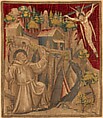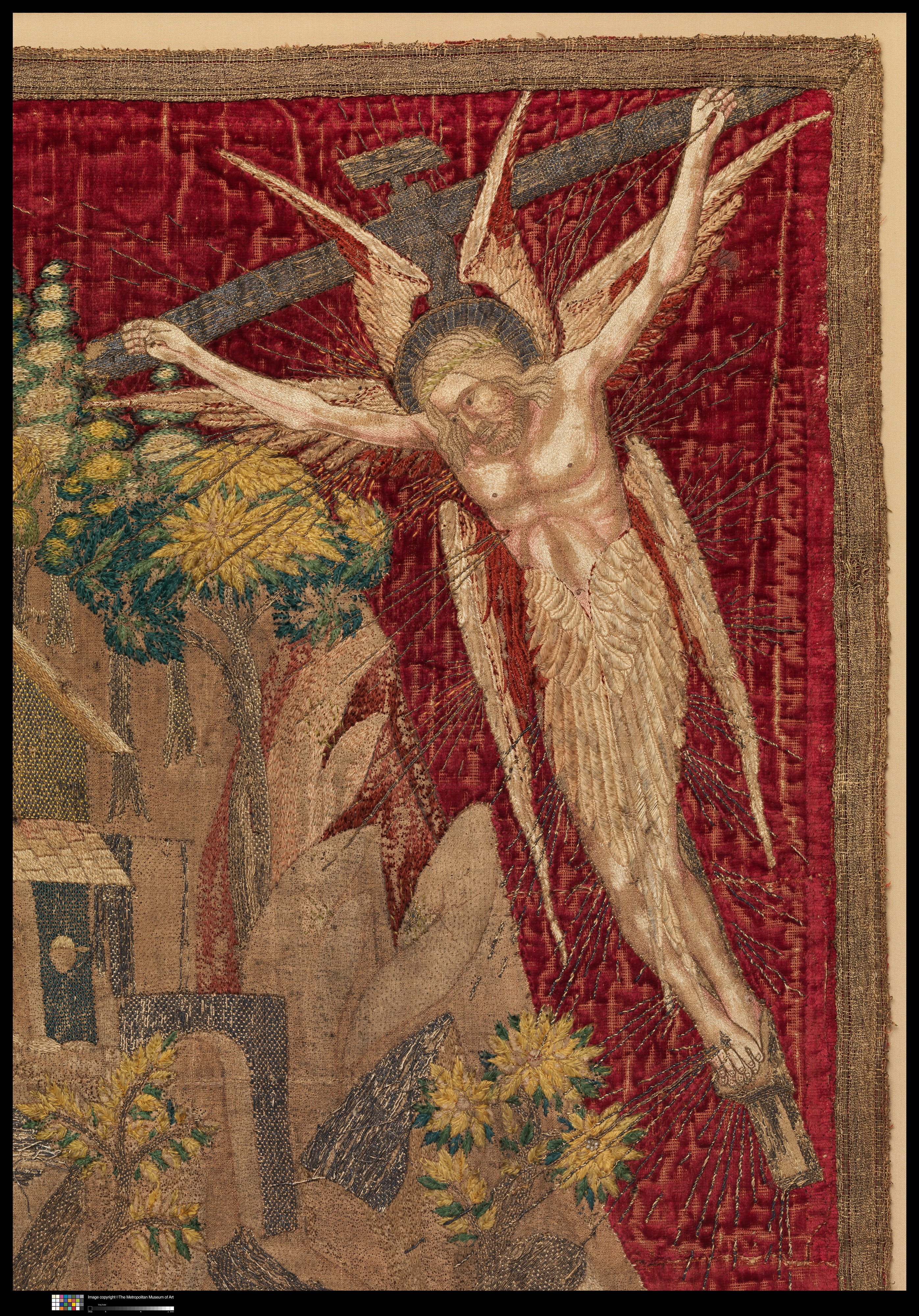Textile with Saint Francis Receiving the Stigmata
Not on view
According to his biographers, Saint Francis of Assisi enjoyed all the comforts of wealth and position until he heard Christ calling to him as he prayed. He then promptly renounced his possessions and devoted the rest of his life to poverty, charity, and veneration. This textile illustrates a pivotal moment in the saint’s life: while kneeling in prayer on a mountain at La Verna, he saw a vision of a seraph, a six-winged angel, on a cross and found he had received the stigmata, the five wounds of Christ, in his hands, feet, and side. The moment marks the fulfillment of Saint Francis’ aspiration to imitate Christ himself in compassion and service to others.
The textile depicts the saint in an active pose, with his hands outstretched and his gaze turned up to the seraph. In composition, the scene resembles the portrayal of the same event in the cycle of frescoes traditionally associated with Giotto that decorate the Church of Saint Francis at Assisi, the site of the saint’s tomb and the mother church of the monastic order he founded. The location assured these paintings a seminal role in the formation of Franciscan imagery, and the use of the iconic image in the textile indicates that it was made for a church of Franciscan affiliation. The medium of embroidery, however, visibly enriches the rustic scene, for the saint’s coarse robe is rendered in smooth silk, and metal threads describe the rays that deliver the miraculous wounds.
Due to rights restrictions, this image cannot be enlarged, viewed at full screen, or downloaded.
This artwork is meant to be viewed from right to left. Scroll left to view more.




